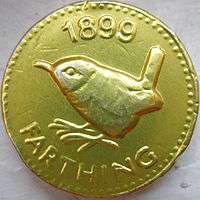Chocolate coin


.jpg)
Chocolate coins, or chocolate money, are gold foil covered chocolates in the shape of coins. The gifting of chocolate coins to children is a Christmas tradition in parts of Europe, and may also occur on Saint Nicholas Day. Chocolate coins have also been incorporated into Jewish celebrations, as Hanukkah gelt and St. Patrick's Day as gifts left behind from Leprechauns the night before.
History
As a Christmas tradition, the chocolate coin giving was thought to be started by the deeds of Saint Nicholas. He was the bishop of Myra in Lycia, which is now considered Turkey. Although there isn’t any written documentation, many legends speak of his kindness to children. He was said to be an incredibly shy person and wanted to give money to the poor children of Myra without them knowing about it. One night he climbed on a roof and threw a purse of money down a chimney, which landed in a pair of stockings that a little girl had hung up to dry. Every year Saint Nicholas would keep giving coins or money to the children of Myra.[1]
United Kingdom
In the United Kingdom chocolate coins mimic the design of real money; they are traditionally bought around Christmas and are used to decorate the Christmas tree and to fill the stockings of children. When children visit a friend or relative they are allowed to find and take chocolates from the tree as a treat. A variant of this is that chocolate coins are hidden somewhere in the house for children to find, often in the form of a treasure trail.[2][3]
See also
References
- ↑ http://www.ownways.com/chocolate/Chocolate_Coin.html Archived November 21, 2008, at the Wayback Machine.
- ↑ Stores are switching chocolate coins back to Sterling as taste for euro takes a nosedive | Mail Online
- ↑ Christmas Tree Traditions in Britain (A British Christmas) Archived 2012-12-06 at the Wayback Machine.
